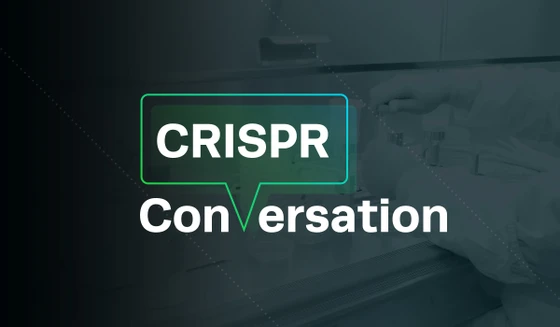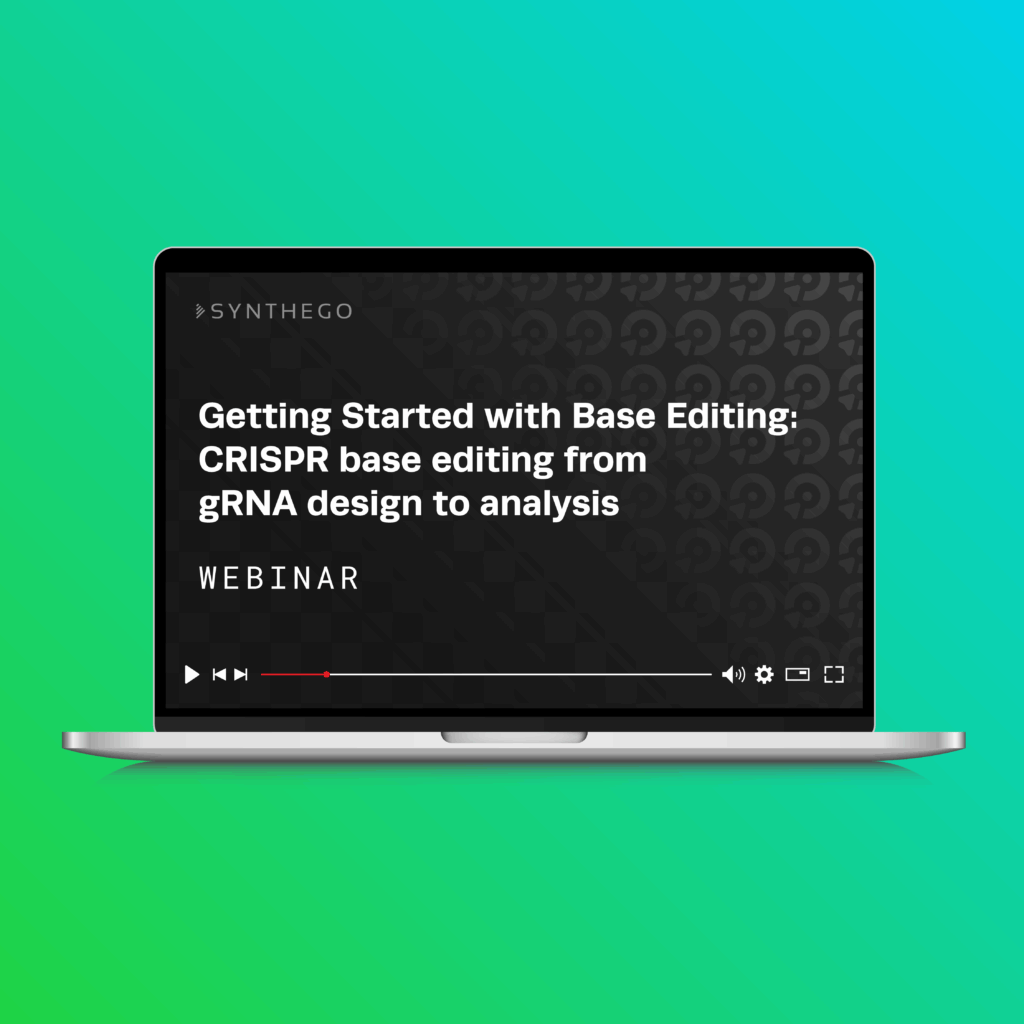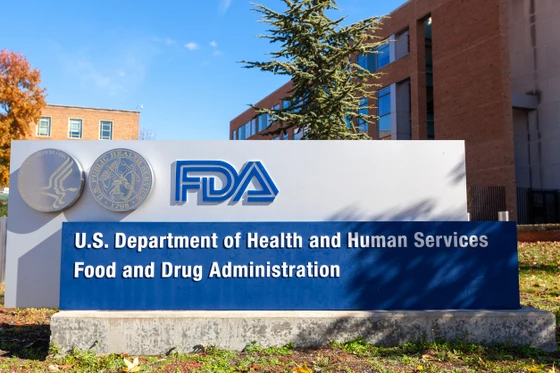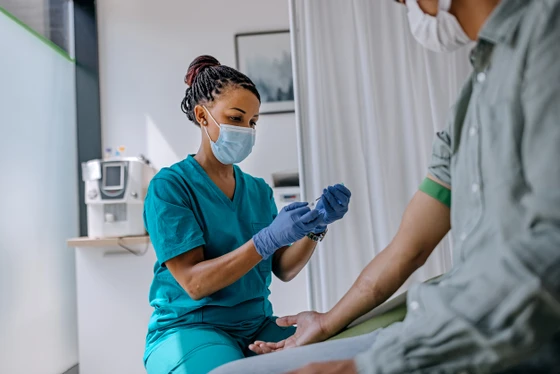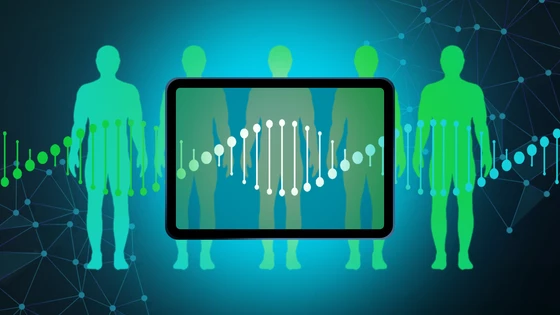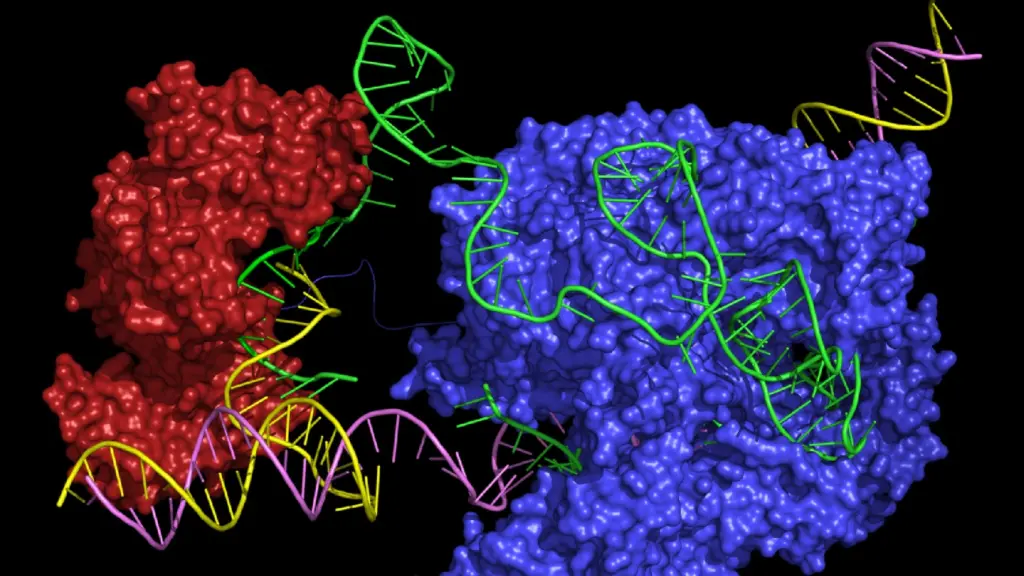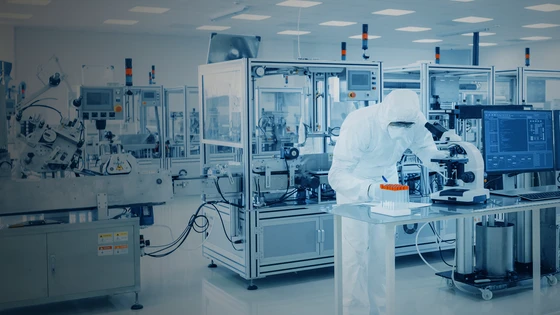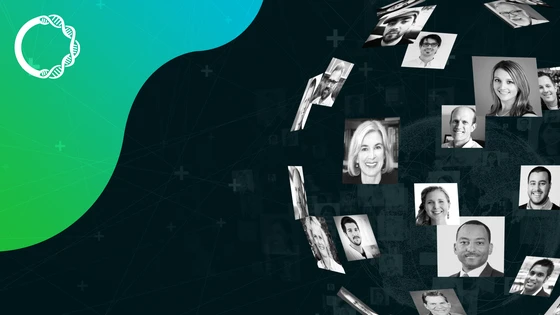Dr. Travis Maures is the Director of Science Research and Development at Synthego. Before coming to Synthego, Travis worked at BioMarin Pharmaceutical, using CRISPR to generate and model genetic disease mutations.
He joined Synthego in 2017 with the goal of developing a highly efficient, automated workflow system for CRISPR gene editing in cells. Since then, he has successfully utilized the synthetic guide RNA factory to collaboratively develop Synthego’s revolutionary Engineered Cells product. Travis hopes to continue pushing the edge of genome engineering by developing novel tools and technologies in the field in the future.
Travis Maures Discusses How Synthetic sgRNAs Revolutionized CRISPR’s Potential
Kevin Holden: Can you tell me about your research when you were at BioMarin, and also what you do now at Synthego?
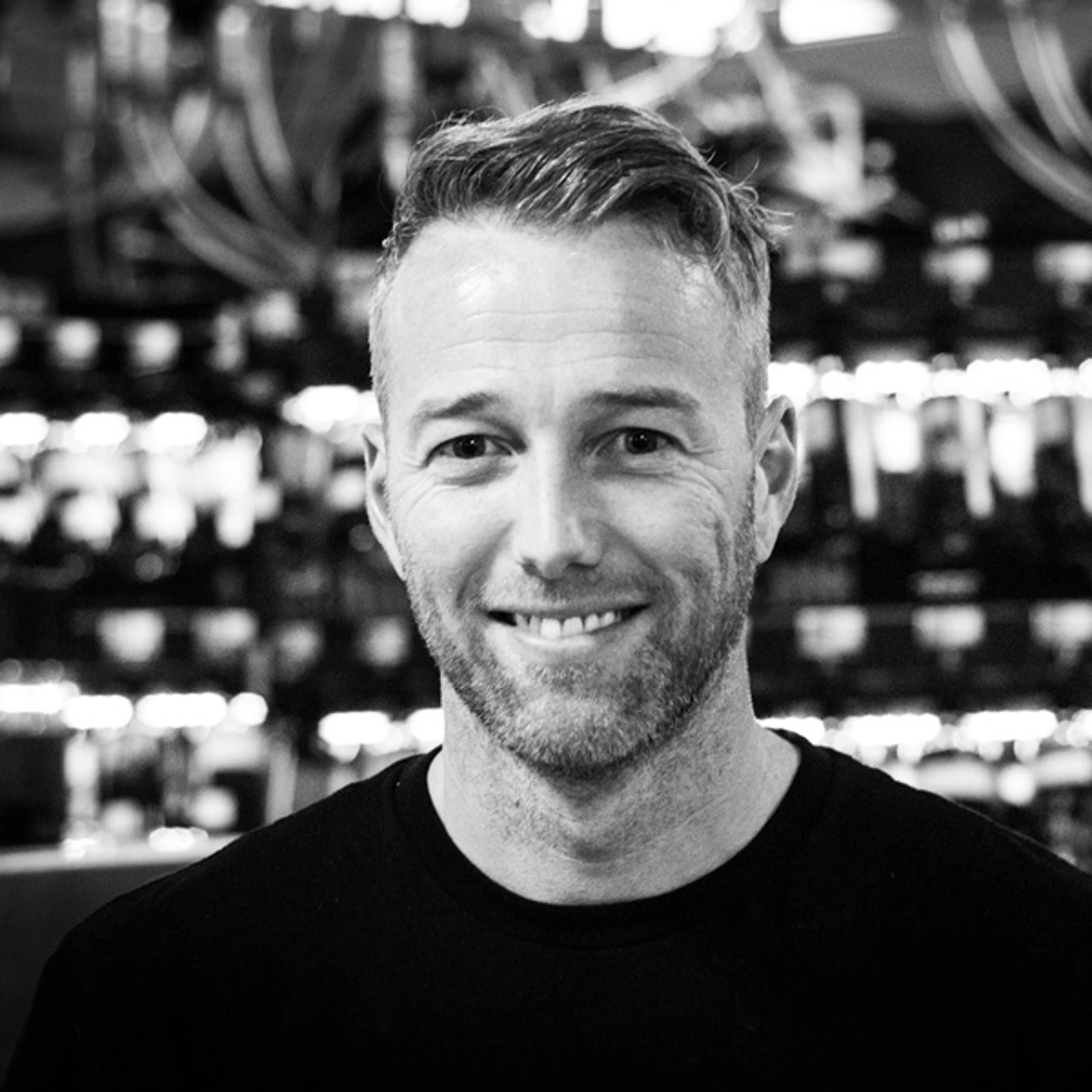
Dr. Travis Maures: At BioMarin, we were generating the precise mutations that exist in patients with specific disorders to develop therapeutics against these rare conditions. Most of these disorders are single-base pair mutations. Obviously, this resolution of change was not possible before CRISPR. The introduction of CRISPR into the industrial world was an exciting time. Before that, mouse models that were generated to study disease were typically done using ESLs, which took a long time. These are 1-to-2-year projects. CRISPR really changed the way we could model things, shortening project times from years down to months and weeks.
It was pretty obvious that this is a powerful technology. It can be used in research to design cell models, and there are obvious implications for therapeutics. So, what began as assessing the technology, developed into a full therapeutic path.
I think what that transitioned, in terms of working at Synthego, was an idea that I had early on, which is that the CRISPR workflow looked at least amenable to automation. I was really excited about there being an ex vivo strategy one day, where we could take cells from patients, edit them using CRISPR, and then bring them back into the patient. I thought there is no way you would want this to be done by hand and by different researchers. I was really excited about coming up with a workflow where you could do this all in one system, even at BioMarin.
KH: Can you tell me a little bit about your role at Synthego now, and a bit about the capabilities you have in the lab here?TM: One of the things I realized very early on is that the workflow we had put together was based on plasmids and in vitro transcribed RNA. Getting that synthetic single guide RNA (sgRNA) in the lab revolutionized our workflow dramatically. Just seeing that power, the efficiency gains that we got, changed my idea of what would be possible in the future. Therapeutics didn’t seem like a moonshot, but more like “This is going to happen.”
Coming to Synthego, the first goal was to harness the power of those guides that you were making at the time and develop a highly automated workflow for CRISPR edits. On top of that, we also wanted to make this high throughput. We could do thousands of edits using the ribonucleoproteins (RNPs), which gave us a tremendous wealth of information pouring out of our instruments every day. It was more data than I've ever had in my life.
Our Engineered Cells platform developed from that. We wanted to really push this idea of automating and doing high throughput experiments. We launched a completely dedicated research effort at Synthego, and I was really excited about that.
One of the coolest things is that, in addition to the biologists and some of the roboticists who were involved in early projects, the chemistry team joined us. It’s the same team that developed our synthetic oligos. Dr. Johnny Walker is a key member of that group. They are in research with us now, so it's a really exciting collaboration—having the ability to make any guide we want and to put modifications within these guides at any point.
For the lab, we have focused on pushing the edge of genome engineering. We are interested in novel tools and technologies for the field. And also, for ourselves—we want to push our research forward as well.
TM: One of the things I realized very early on is that the workflow we had put together was based on plasmids and in vitro transcribed RNA. Getting that synthetic single guide RNA (sgRNA) in the lab revolutionized our workflow dramatically. Just seeing that power, the efficiency gains that we got, changed my idea of what would be possible in the future. Therapeutics didn’t seem like a moonshot, but more like “This is going to happen.”
Coming to Synthego, the first goal was to harness the power of those guides that you were making at the time and develop a highly automated workflow for CRISPR edits. On top of that, we also wanted to make this high throughput. We could do thousands of edits using the ribonucleoproteins (RNPs), which gave us a tremendous wealth of information pouring out of our instruments every day. It was more data than I've ever had in my life.
Our Engineered Cells platform developed from that. We wanted to really push this idea of automating and doing high throughput experiments. We launched a completely dedicated research effort at Synthego, and I was really excited about that.
One of the coolest things is that, in addition to the biologists and some of the roboticists who were involved in early projects, the chemistry team joined us. It’s the same team that developed our synthetic oligos. Dr. Johnny Walker is a key member of that group. They are in research with us now, so it's a really exciting collaboration—having the ability to make any guide we want and to put modifications within these guides at any point.
For the lab, we have focused on pushing the edge of genome engineering. We are interested in novel tools and technologies for the field. And also, for ourselves—we want to push our research forward as well.
KH: You were pretty instrumental in helping develop the ICE tool as well. I know you can't talk about everything you are doing at Synthego, but maybe just tease a couple of words on the R&D efforts in your lab right now.
TM: We really had to come up with a way to analyze all of the data coming out of the high throughput system we created. ICE wasn't actually a product at the time. It was really just software for us to break down and understand what was happening and the edits that we were seeing. ICE was built out of necessity as part of this automated pipeline.
I think that the strongest part of this is that, with all these edits that we do, there is a ton of power in the information that we get back. That has been a big change in biology in my lifetime. The data sets that we get back now are large in these massive experiments.
We have been able to show that some things that seemed random before are more probabilistic or structured. Maybe that's a sort of hint. We have seen some of that with indel prediction. We have seen several papers this year. We have definitely been privy to that for a while, and we have been using that prediction system to show guides have a certain indel pattern they are going to produce. That also can work for the success of a knock-in as well. We think some of the successes of this early work are probably going to translate into prediction models or de-complicating some of the issues with knock-ins.
For actual research projects that I can talk about, we really want to open up the use of different nucleases. I think part of the plan in our company is we want to make any edit that we can out there in the genome. We wouldn't be able to do that in any cell, if you rely on Cas9 being your only nuclease. That's only going to hit one PAM. If we can open up a variety of nucleases, then, when we have a customer who wants to make any edit, it would automatically select the best nuclease for that situation, recommend it, and then carry on the experiment. Those are the sorts of projects that we have been working on.
KH: So, definitely expanding into many other types of cells, besides just the cell lines we offer for the engineered cells?TM: Yeah, I think that’s the important thing there—it’s hard for us also, but we have to focus on difficult-to-edit cells. That's really going to be the challenge for customers, and those are the kind of challenges we want to open up. We have to go towards the ones that people would recommend to avoid in the past.
TM: Yeah, I think that’s the important thing there—it’s hard for us also, but we have to focus on difficult-to-edit cells. That's really going to be the challenge for customers, and those are the kind of challenges we want to open up. We have to go towards the ones that people would recommend to avoid in the past.
KH: Switching gears a little bit, before you came to Synthego, did you use CRISPR and if you did, how were you doing that?TM: I think I started using CRISPR just before I went to BioMarin, when I was a postdoc at Stanford. I was working in C. elegans at the time. If memory serves, that didn't work very well. I think we got a plasmid from Jennifer Doudna and we got it to work eventually, but it was very early days CRISPR.
TM: I think I started using CRISPR just before I went to BioMarin, when I was a postdoc at Stanford. I was working in C. elegans at the time. If memory serves, that didn't work very well. I think we got a plasmid from Jennifer Doudna and we got it to work eventually, but it was very early days CRISPR.
KH: When did you first hear about Synthego?TM: I was at BioMarin. We were using plasmids at first, of course. Everyone was doing that. I think right at the exact time that we started to produce our own Cas9, we needed some pure RNA. I was thinking “Why can't someone synthesize this RNA?” And actually, you showed up at BioMarin. I think yourself and Ted came by, and you guys were selling synthetic guides door-to-door.
So, you guys showed up, gave me a sample of the guide RNA and pretty much changed our experiments that week. It was hard back then to really quantify your edit; we had to use a lot of T7 assays, which were notoriously difficult to analyze the cutting. But I think 10-15%, maybe 20% percent of our cells were being edited. And then, we tried your RNA, and it was at 60, 70, 80%, to the point where we thought that there was something wrong with our assays. So, we were really happy about it.
TM: I was at BioMarin. We were using plasmids at first, of course. Everyone was doing that. I think right at the exact time that we started to produce our own Cas9, we needed some pure RNA. I was thinking “Why can't someone synthesize this RNA?” And actually, you showed up at BioMarin. I think yourself and Ted came by, and you guys were selling synthetic guides door-to-door.
So, you guys showed up, gave me a sample of the guide RNA and pretty much changed our experiments that week. It was hard back then to really quantify your edit; we had to use a lot of T7 assays, which were notoriously difficult to analyze the cutting. But I think 10-15%, maybe 20% percent of our cells were being edited. And then, we tried your RNA, and it was at 60, 70, 80%, to the point where we thought that there was something wrong with our assays. So, we were really happy about it.
KH: When you started using the synthetic guides, how exactly did it benefit your workflows? It’s also important when switching from using two-piece guides to a single-guide, right?TM: I think our first product from you was the two-piece system, which worked really well. But we saw that the two-part system just had a lot more variability in comparison to the fully synthetic guide RNA. With a fully synthetic guide, we could count on the fact that this experiment was going to work.
That was the biggest difference, the variability. It’s the same with IVT as well. We could see some activity with IVT, but there would be times when the prep was not the same as the last time we generated using IVT and showed really low levels of editing. So, using the single guides was a big improvement.
TM: I think our first product from you was the two-piece system, which worked really well. But we saw that the two-part system just had a lot more variability in comparison to the fully synthetic guide RNA. With a fully synthetic guide, we could count on the fact that this experiment was going to work.
That was the biggest difference, the variability. It’s the same with IVT as well. We could see some activity with IVT, but there would be times when the prep was not the same as the last time we generated using IVT and showed really low levels of editing. So, using the single guides was a big improvement.
KH: We'll just end with an extra little question. What is your favorite thing about Synthego?TM: I would say it's the diversity of expertise and the people that are here. I think one of the main challenges in any difficult project that we kick off in research is that sometimes it spills over into something that we don't have the technology for. It’s so empowering when you get to a blocker in your workflow or some technology that you don't have and instead of saying, “Well, we’re stuck,” what actually happens is we get a team together.
If it's a software problem, we bring software people over. We have roboticists that come over and can help us, or engineers that can design and manufacture the part to the problem that we have. I have never really worked in a team like that in my life, and I think it's really a lot of fun. It just feels like you can do anything, so it's a great feeling!
TM: I would say it's the diversity of expertise and the people that are here. I think one of the main challenges in any difficult project that we kick off in research is that sometimes it spills over into something that we don't have the technology for. It’s so empowering when you get to a blocker in your workflow or some technology that you don't have and instead of saying, “Well, we’re stuck,” what actually happens is we get a team together.
If it's a software problem, we bring software people over. We have roboticists that come over and can help us, or engineers that can design and manufacture the part to the problem that we have. I have never really worked in a team like that in my life, and I think it's really a lot of fun. It just feels like you can do anything, so it's a great feeling!
